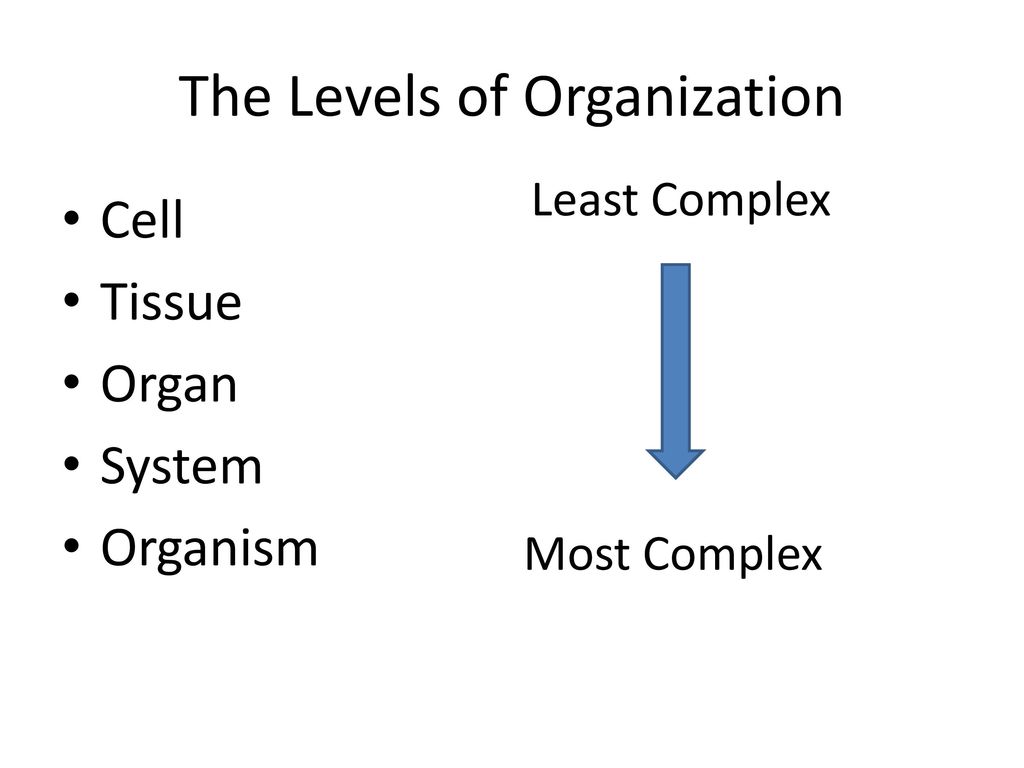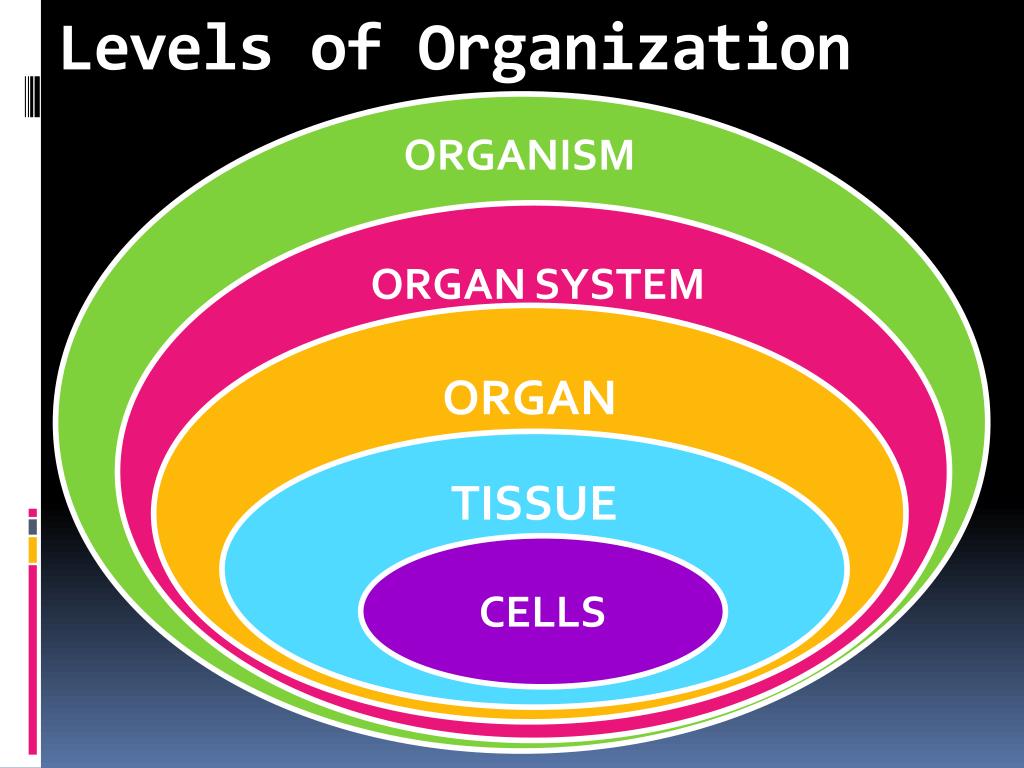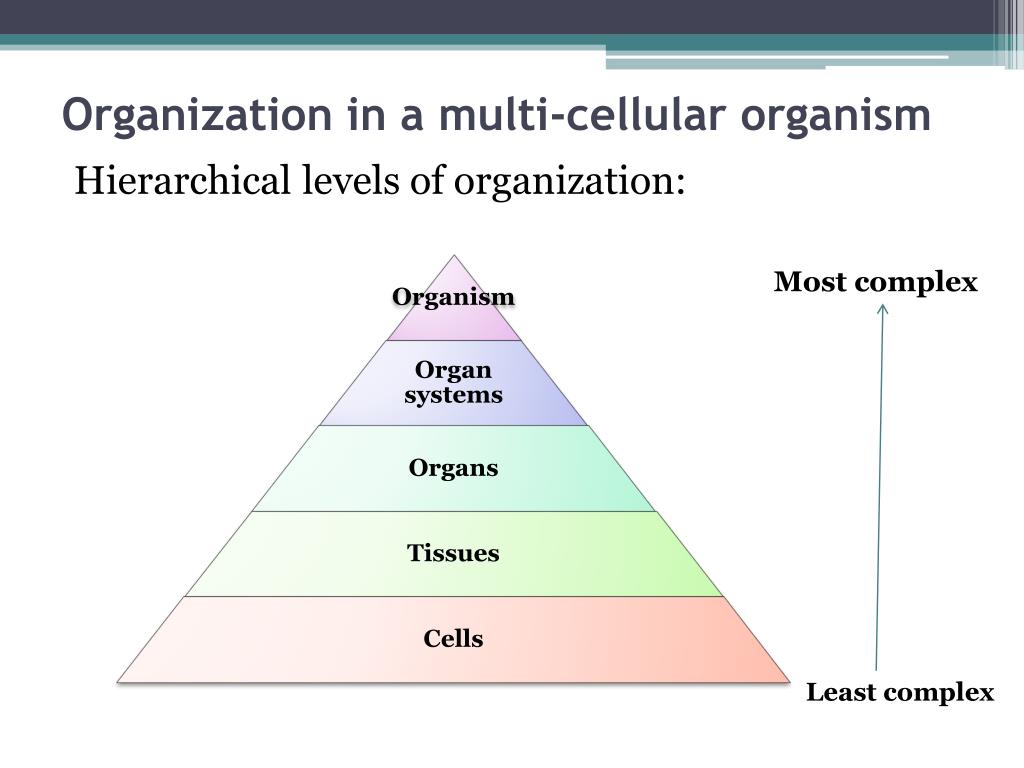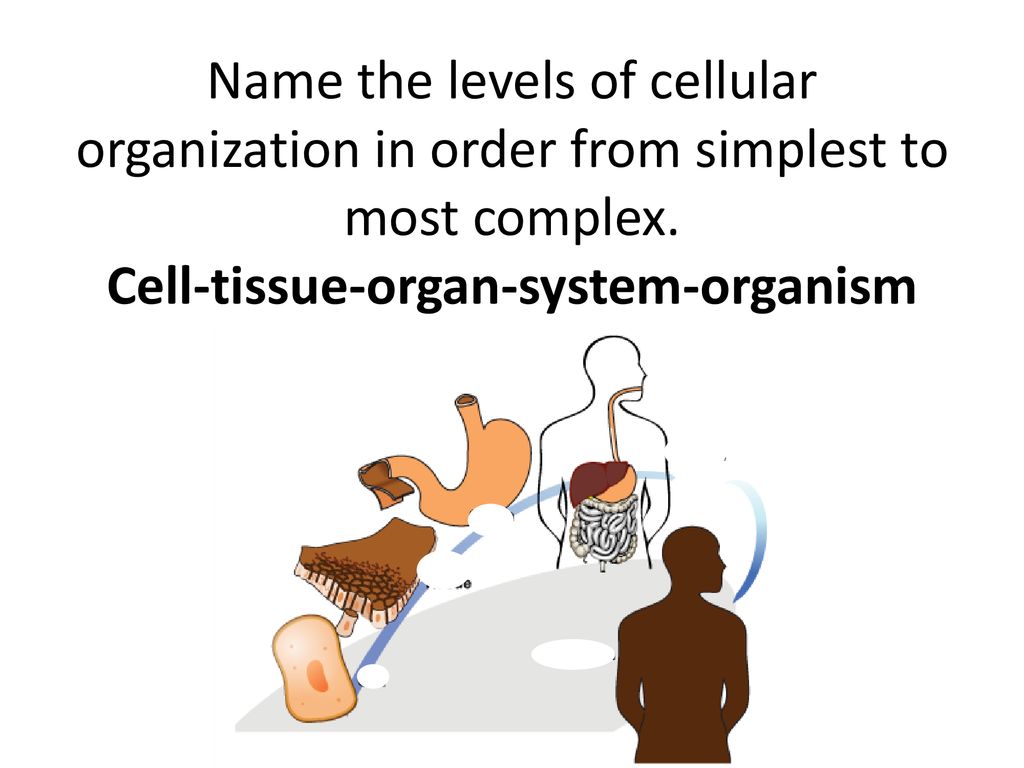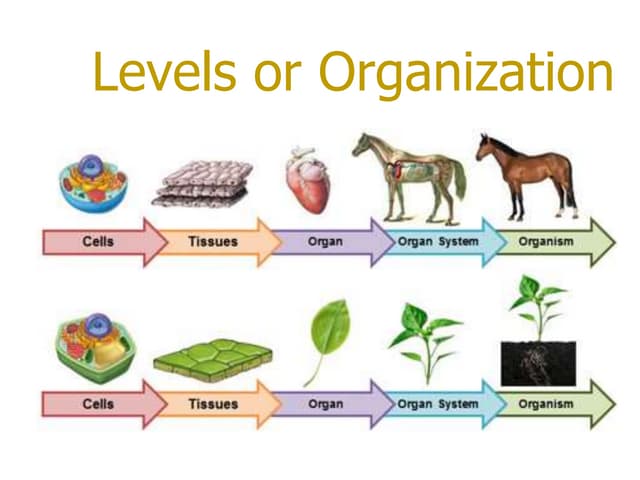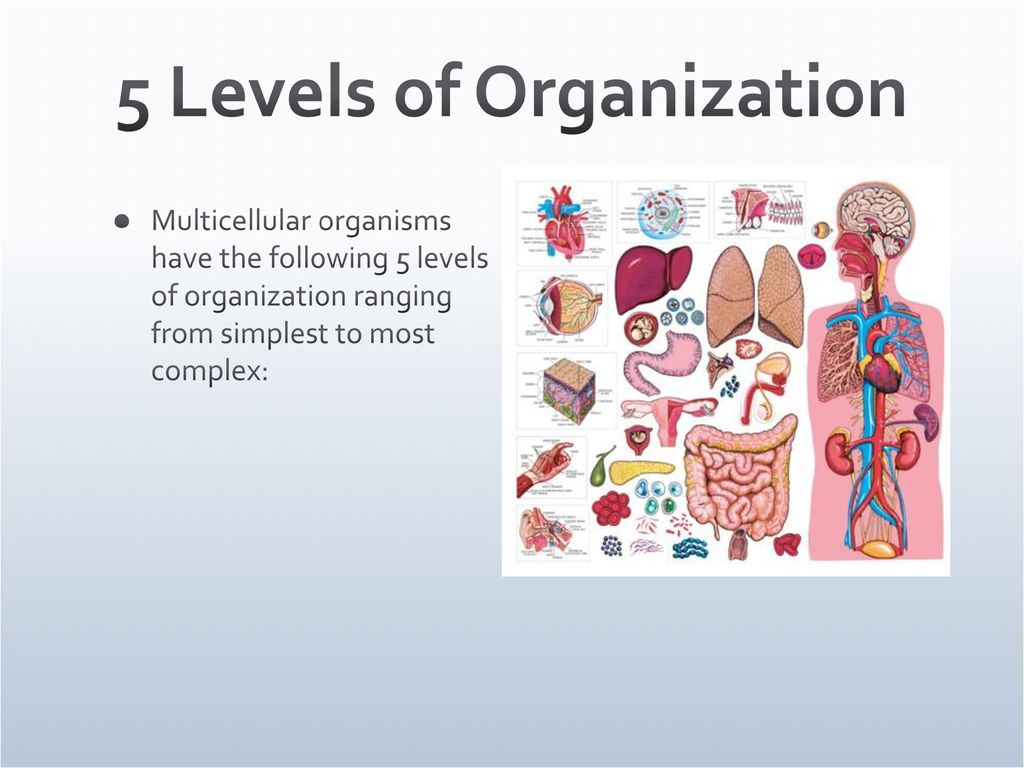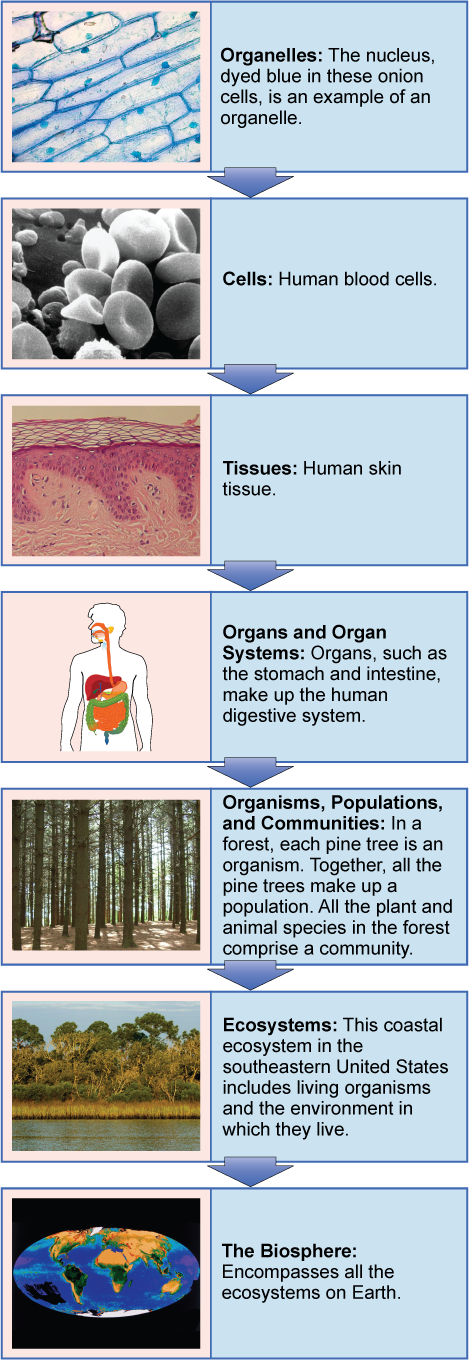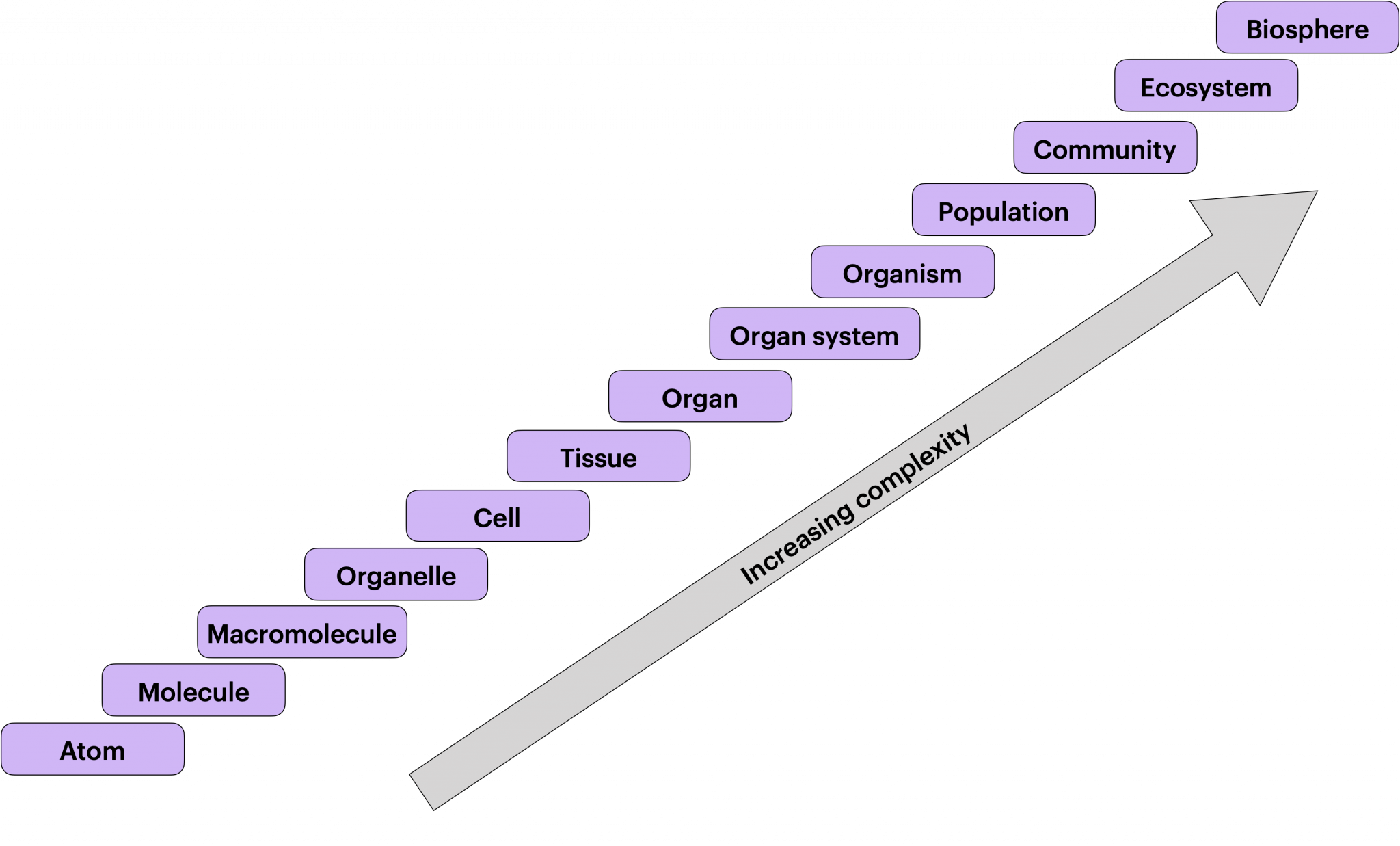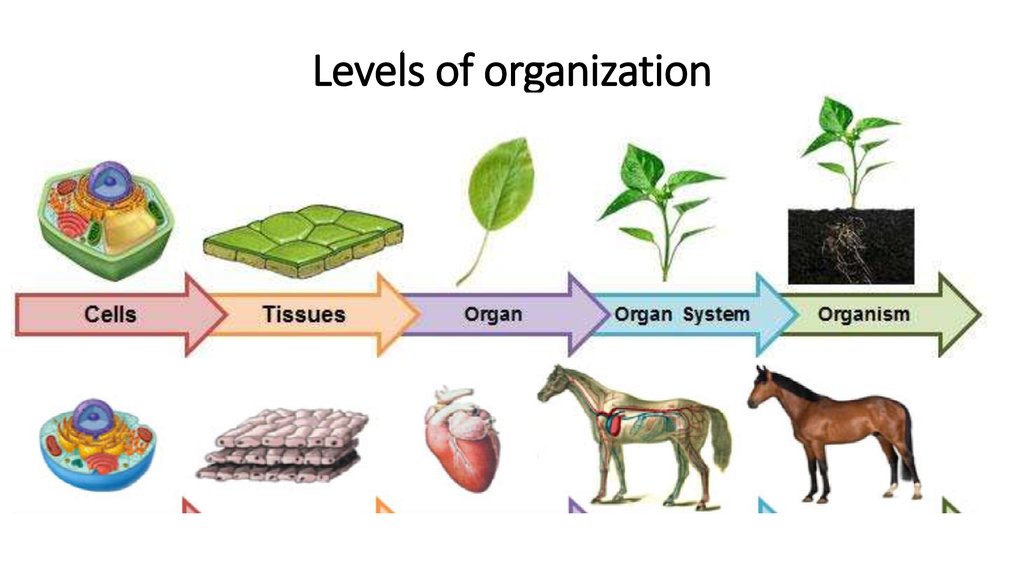Levels Of Organization From Simplest To Most Complex
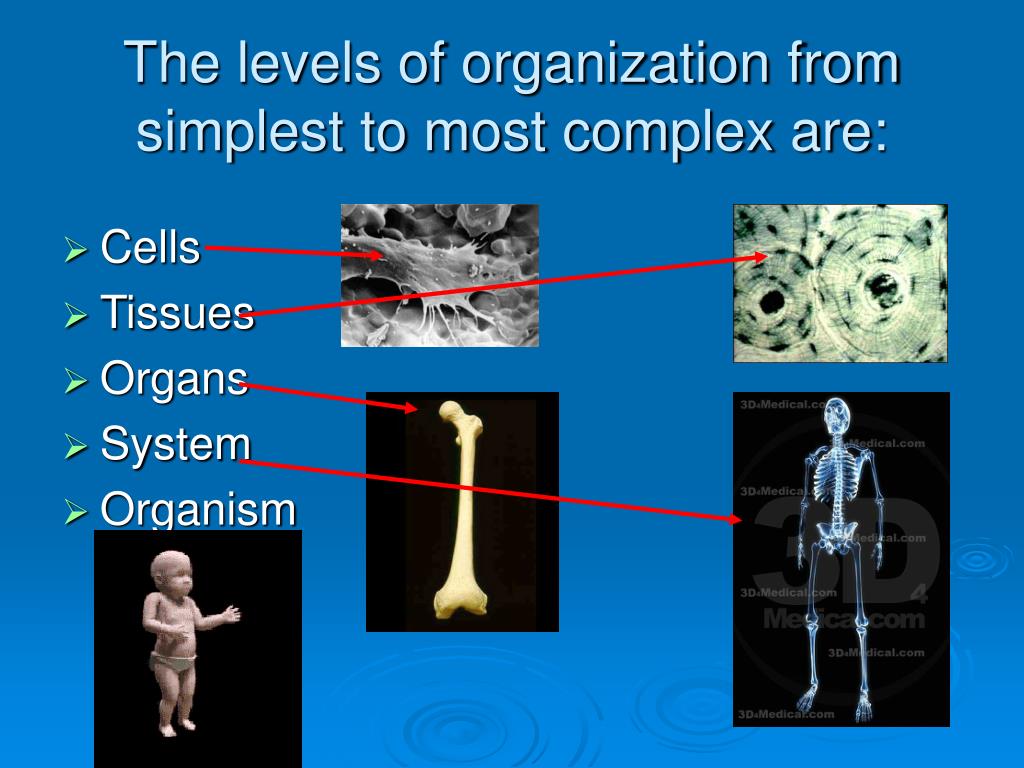
Imagine peering through a powerful microscope, not at a single, isolated cell, but at a bustling, interconnected city. Cells are just tiny inhabitants. They work together in an intricate dance, a harmony that builds upward to create you, me, and everything alive around us.
This intricate arrangement, this building-block approach to life, is what scientists call the levels of organization. Understanding these levels, from the simplest atom to the magnificent biosphere, is crucial for grasping the complexity and interconnectedness of the natural world. It provides a framework for examining how everything from a single enzyme to an entire ecosystem functions and interacts.
The Foundation: Atoms and Molecules
At the very base of this organizational pyramid lie atoms. These are the fundamental building blocks of all matter. Each atom is composed of protons, neutrons, and electrons, dictating its chemical properties.
Atoms combine through chemical bonds to form molecules. Water (H₂O) and deoxyribonucleic acid (DNA) are examples. Molecules are more complex structures with specific functions.
From Molecules to Macromolecules
Some molecules are small and simple. Others are huge and complex, known as macromolecules. These are the workhorses of life: carbohydrates, lipids, proteins, and nucleic acids.
Carbohydrates provide energy. Lipids store energy and form cell membranes. Proteins perform a vast array of functions, from catalyzing reactions to transporting molecules. Nucleic acids, like DNA and RNA, carry genetic information.
The Cell: The Basic Unit of Life
The next level of organization is the cell. It is often called the fundamental unit of life. Cells are enclosed by a membrane and contain all the necessary machinery to carry out life processes.
There are two main types of cells: prokaryotic and eukaryotic. Prokaryotic cells, like bacteria, are simple and lack a nucleus. Eukaryotic cells, found in plants, animals, and fungi, are more complex and have a nucleus and other specialized organelles.
Organelles are like the cell's tiny organs. Each one performs a specific function to keep the cell alive and functioning properly. The mitochondria generate energy, the ribosomes synthesize proteins, and the nucleus houses the DNA.
Tissues: Working Together
Similar cells that perform a specific function are grouped together into tissues. There are four main types of tissues in animals: epithelial, connective, muscle, and nervous. Epithelial tissue covers surfaces. Connective tissue supports and connects other tissues. Muscle tissue enables movement. Nervous tissue transmits signals.
In plants, tissues include epidermis, ground tissue, and vascular tissue. Each tissue type performs a unique set of functions that contribute to the overall health and function of the plant.
Imagine a brick wall. Each brick is like a cell, and the mortar holding them together is like the extracellular matrix that binds tissues together. The whole wall is like a tissue that provides structure and support.
Organs: Specialized Structures
Different tissues working together form an organ. The heart, lungs, and brain are all examples of organs. Each organ has a specific function, contributing to the overall survival of the organism.
The heart, for example, is made up of muscle tissue, connective tissue, and nervous tissue. These tissues work together to pump blood throughout the body. A leaf is a plant organ made of epidermis, mesophyll and vascular tissue.
The functionality of an organ is heavily dependent on the health of its tissues. Damage to a tissue, such as scar tissue formation after an injury, can impair the organ's function.
Organ Systems: A Coordinated Effort
Multiple organs working together form an organ system. The digestive system, circulatory system, and nervous system are all examples of organ systems. Each system carries out a major function in the body.
The digestive system breaks down food and absorbs nutrients. The circulatory system transports oxygen and nutrients to cells. The nervous system controls and coordinates bodily functions.
These systems are interdependent. The digestive system provides the circulatory system with nutrients, and the circulatory system delivers oxygen to the nervous system. This interconnectedness ensures the organism functions as a whole.
Organism: The Individual
All the organ systems working together create an organism. An organism is a complete living being. It can be a single-celled bacterium or a complex multicellular animal.
Each organism has its own unique characteristics and capabilities. It is the product of the interactions between all of its organ systems.
Consider a tree. It has roots that anchor it in the ground and absorb water and nutrients. It has a trunk that provides support and transports fluids. It has leaves that capture sunlight for photosynthesis. All these parts work together to keep the tree alive and growing.
Populations: Groups of the Same Species
A population is a group of individuals of the same species living in the same area. A flock of birds or a herd of deer are examples of populations. Populations interact with each other and with their environment.
Populations are constantly changing in size and composition. Birth rates, death rates, immigration, and emigration all influence population dynamics.
The size of a population can have a significant impact on the environment. A large population can deplete resources and pollute the environment.
Communities: Interacting Populations
Different populations living together in the same area form a community. A forest, a grassland, or a coral reef are examples of communities. Populations interact with each other in complex ways, influencing each other's survival and reproduction.
These interactions can be beneficial, harmful, or neutral. Predation, competition, and symbiosis are all examples of community interactions.
The health of a community depends on the diversity and stability of its populations. A diverse community is more resilient to disturbances.
Ecosystems: Living and Non-Living
A ecosystem includes all the living organisms (biotic factors) in a specific area, as well as the non-living components (abiotic factors), such as water, soil, and air. Ecosystems are dynamic and complex systems. They involve constant flow of energy and cycling of nutrients.
Energy flows through an ecosystem from producers (like plants) to consumers (like animals). Nutrients cycle through the ecosystem as organisms live, die, and decompose.
Ecosystems provide valuable services to humans, such as clean air, clean water, and food. These services are essential for human well-being.
Biosphere: The Global Ecosystem
The biosphere is the highest level of organization. It encompasses all the ecosystems on Earth. It is the sum of all living things and their interactions with the environment.
The biosphere is a closed system, meaning that matter is not exchanged with the rest of the universe. However, energy from the sun is constantly entering the biosphere.
Human activities are having a significant impact on the biosphere. Climate change, deforestation, and pollution are all threatening the health of the biosphere.
Understanding the levels of organization helps us appreciate the interconnectedness of all living things. It shows us how everything from a single atom to the entire biosphere is linked together.
As we journey from the microscopic to the macroscopic, we witness a symphony of interactions, a testament to the elegant architecture of life. By recognizing these levels, we can better understand the fragility and resilience of the world around us, and work towards its preservation. It is our responsibility to safeguard this intricate web of life for future generations, ensuring that the music of the biosphere continues to play on.
